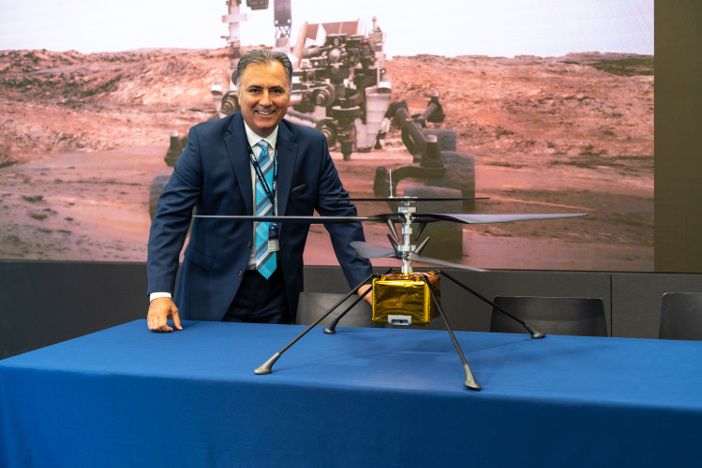A prototype drone destined for Mars has passed a series of milestone flight tests in a simulated Martian-environment and the final version is under construction, it has been revealed.
California-based aerospace company AeroVironment has been working with NASA’s Jet Propulsion Laboratory (NASA/JPL) to build an unmanned Mars helicopter that will fly on the red planet as part of the Mars Exploration Program within the next three years.
AeroVironment president and CEO Wahid Nawabi said, “Our experience with near-space aircraft like Pathfinder and Helios make us uniquely suited to collaborate with NASA and JPL on this historic, interplanetary venture. The effort has also benefited from the lightweight and high-precision methods integral to our projects in our MacCready Works laboratory.”
The Pathfinder robotic spacecraft landed on Mars in 1997 to survey Mars, while Helios was a solar-electric prototype drone that demonstrated sustained flight at altitudes of 100,000ft in 2001.
Engineers at AeroVironment have been able to use airfoil design principles and simulation tools developed for the high-altitude flights of Helios in the Mars helicopter design, because the Earth’s atmosphere at 100,000ft has a similar air density to that found on the surface of Mars.
AeroVironment delivered an intial Mars helicopter rotor and landing gear prototype to NASA/JPL in May 2016. This was integrated with a JPL-developed controller and was used to demonstrate free flight in a simulated Mars atmosphere.
Subsystems for the drone were delivered in October 2017 for integration into Mars-representative engineering development models. JPL built two engineering development model Mars helicopters, integrating the rotor, landing gear, fuselage shell and solar panel substrate with a fuselage composed of the flight avionics, onboard power, telecoms, flight control and sensors into two models.
A development model was used for flight demonstration in JPL’s 25ft space simulator, and the other for environmental testing, including thermal tests to ensure the vehicle can endure the frigid Mars nights and vibration tests to make sure it is rugged enough to survive launch. Both vehicles passed the rigorous tests, paving the way for the development and fabrication of the final, Mars-bound version.
AeroVironment is currently building the flight versions of some of the subsystems for the program. JPL plans to then install the finished Mars Helicopter into the Mars 2020 rover for its journey to a still to be detrmined Martian landing site.
AeroVironment’s contributions to the first Mars drone include the design and development of the helicopter’s airframe and major subsystems, including its rotor, rotor blades, hub and control mechanism hardware. The company also developed and built high-efficiency, lightweight propulsion motors, power electronics, landing gear, load-bearing structures, and the thermal enclosure for NASA/JPL’s avionics, sensors, and software systems.





